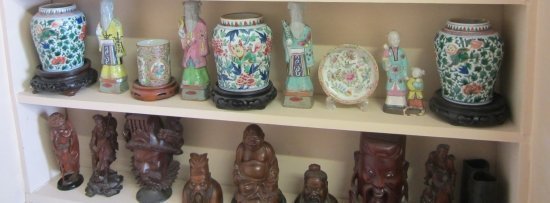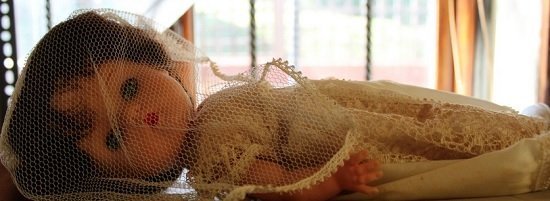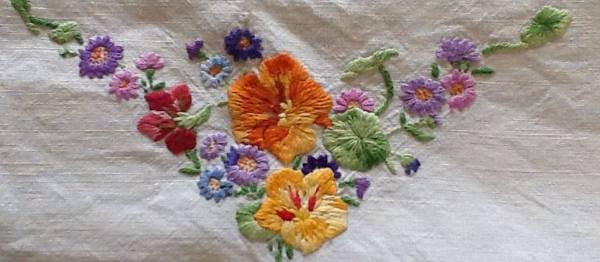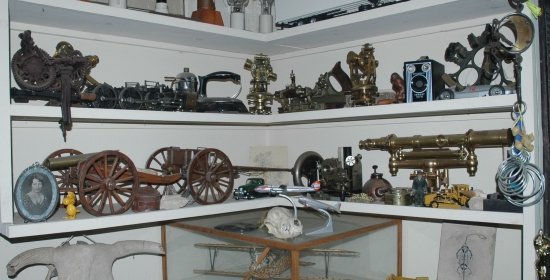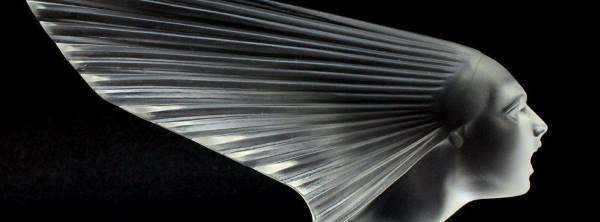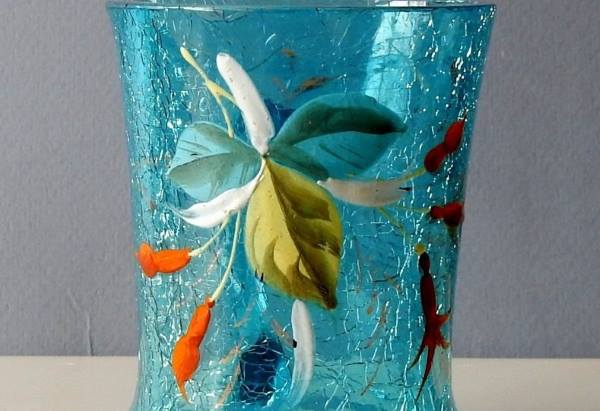Often the best things in life are discovered by accident. A cottage with a ‘For Sale’ notice discovered while taking a country walk; a wrong turning while driving suddenly reveals a breathtaking view; discoveries are often made in life and in work, when we least expect them.
Who would have thought that one of the most complex of all decorative techniques used on ceramics – pâte-sur-pâte, (with its translucent clay on clay reliefs) – was discovered by accident?
Its origins can be traced back to the 1850s when a Chinese celadon vase with white floral reliefs in the Ceramic Museum at Sevres was being reproduced.
It was thought that the Chinese vase had a tinted celadon ground on which the white reliefs were applied.
This was not so. Rather, the grey/green colour was achieved by a coloured glaze being carefully applied between the reliefs. Through experiments at Sevres to reproduce what was thought to be a tinted ground with white reliefs, a new technique evolved, which proved to be of even greater significanceŠ.
The art director of the Manufactory of Sevres set up a studio of talented ceramicists to work on this new technique which they called ‘pâte-sur-pâte’, ‘Pate Rapportee’ and ‘Pate d’application’.
It was a method of applying white reliefs to coloured grounds in the clay state. Regnault the noted chemist, the sculptors H. Regnier and Gelly and Louis Marc Emmanuel Solon were the first to be involved in bringing the technique to fruition.
Solon said, “I was charmed to be asked to join my efforts to those of the few artists then engaged in bringing the process to perfection; no work could have pleased me more.
“The contrast produced by the sharpness of the outlines and the soft and mellow tints of the transparent reliefs made me most anxious to try some figure subjects, the effect of which would, as it seemed to me, be as novel as it would be pleasant.”
At this time, Solon had formed a friendship with M E Rousseau, a china dealer, who had a passion for the exceptional, unusual and the beautiful.
Solon confided his ideas for decorative schemes, and Rousseau was anxious to commission several vases and plaques decorated in pâte-sur-pâte.
Rousseau offered to finance Solon’s work at an independent china factory and, finding his offer too tempting to reject, Solon began experiments in his own time.
Soon he was producing original, dark-coloured grounds by using ‘engobes’ (slips) on which he applied translucent figures. These examples of his work, some of which are exhibited in the Victoria & Albert Museum, were signed under his nom de plume ‘Miles’, based on his three initials, M L S.
These pieces were fired at the porcelain manufactory of Clauss in Paris and soon Solon was exhibiting a large series of pâte-sur-pâte plaques for the first time at the exhibition of the ‘Union Centrale des Arts appliques l’Industrie’, in 1865.
The official report of the exhibition was written by Regnault who pointed out the difference between the method used by Solon himself and that used at Sevres.
Instead of working on the celadon and other lightly coloured tinted bodies preferred by Sevres, he overlaid dark and deeply coloured slips onto the piece to be decorated, and his reliefs were more dramatic than the delicate images of Sevres.
Regnault acknowledged Solon’s mastery of the technique by asking him to decorate a large vase by his own methods which would be shown with the Sevres exhibits at the Paris International Exhibition of 1867.
It is likely that Colin Minton Campbell, the Head of Minton, saw examples of Solon’s work in the exhibitions of 1865 and 1867.
The outbreak of the Franco-Prussian war in 1870 put an abrupt end to Solon’s twelve years of employment with Sevres. The inhabitants of his village had to leave on the eve of occupation by the invading army.
Solon was in a precarious state of health at the time, making him physically incapable of taking part in the defence of his country and he decided to leave for England.
“The goal of my journey presented itself at once in my mind. Minton’s factory, the name of which stood foremost amongst the names of the most celebrated ceramic establishments of Europe, was the place where I felt confident I should find permanent employment,” he later explained.
Solon was given an enthusiastic welcome by Colin Minton Campbell and the day after his arrival he commenced pâte-sur-pâte trials on the Parian body.
Parian, a porcelain-like body, was receptive to the pâte-sur-pâte process providing the applied slips were of the same body.
The Sevres porcelain body had its limitations; few metallic oxides would withstand the high firing temperatures required, limiting the range of colours, with celadon being most often used.
Minton Parian allowed for a greater range of colours: peacock blue, blue-green, olive, warm green, bronze-green, dull brown, dark brown, red-brown and changing pink. These colours gave greater depth and tone to the applied layers of white slip which, in comparison, made the celadon of Sevres, however beautiful, lack variety.
The white pâte-sur-pâte decoration on these coloured bodies was described by Solon as: “resembling clouds of thick cream in a cup of dark tea.”
Solon describes the technique. “Although the pâte-sur-pâte process partakes of the character of both painting and modelling, to be really effective it must differ entirely in its treatment.”
The work, only slightly raised upon the ground, is not to be likened to a bas-relief; lacking the resources of shading, it cannot be compared to an enamel painting.
Well-devised transparencies may assist in establishing the distances between the respective parts of the picture; but besides a good distribution of thin and thick reliefs, it is most important that all details should be sharply accentuated, both with incised lines and neatly raised touches of ‘slip’.
This touching up must be exaggerated to a degree which, upon any other material, would seem to go beyond all limits of permitted dryness of workmanship.
It is, however, the only way of securing clearness and brilliancy to the details when all is bathed in a thick coating of transparent glaze.
While the work was being executed, all the transparencies, whether applied thickly or thinly, appeared to have the same opacity. Not until the piece was fired would any errors be apparent. But, at this final stage, there would be no means of correction.
Solon’s figures were his own special creations – a blend of French and Greek – and the subjects in which he excelled were of maidens and cherubs representing various subjects – the many facets of love, for example: Love Unveiled, Barometer of Love, Love’s Toll Barrier, and a pair of vases Love Homes and Love Departs.
Other subjects featured the elements: ‘Wind’ & ‘Rain’, ‘Fire’ & ‘Water’ and he was fond of cherubs involved in a variety of sporting activities.
Solon’s delightful sense of humour can be found in most of his works, a typical example being the pair of vases exhibited at the St Louis Exhibition of 1904; one vase depicts fair maidens ensnaring and securing imprudent cupids in their net; on the other, the nymphs in their turn, vanquished and bound by Cupid, far from offering any resistance, assist him to fasten the bonds!
Solon found that working on flat slabs gave him more freedom in the artistic arrangement of a composition, A Reviving Flame, for example, shows nymphs standing in line, holding cherubs either side of a cauldron of fire, and A Shoe that Fits shows cherubs serving a queue of maidens with shoes, having a further selection of shoes hanging above on laurel swags. The slabs could be incorporated into furniture – examples being the casket with five of Solon’s pâte-sur-pâte panels fitted into wooden frames mounted in metal, which was exhibited at the Vienna Exhibition of 1873, and the ebonised clock case, inset with slabs by Solon,
The largest piece of pâte-sur-pâte made was the vase presented to Queen Victoria by Minton in 1897. The body was joined together in three sections to give an overall height of 31 inches. The vase was exhibited in London and various periodicals described the piece as having been kept in the wet state for more than two years while the decoration was being completed.
This amused Solon who replied “Many were the pieces I turned out during those two years, and I am quite sure that I should, long ago, have given up the process if it had required my keeping the work in the wet state during all that time.”
The time Solon took in the execution of his work varied greatly. The Planning of the Journey took 25 days; and his masterpiece, Lycurgus and the Wrestling Girls of Sparta, seven months.
The time taken was reflected in the retail price,’The Art Journal’ records, “the artistic value of his work is not to be judged by the comparatively high prices it sometimes realises. Although £1,600 seems a large amount, and a pair of his vases has been sold for that much, yet he has no compeer and the true Art work, such as his, is properly beyond price.”
Louis Solon left Minton in September 1904, but the factory continued to supply him with slabs, which he decorated at home until his death in 1913. The pâte-sur-pâte technique continued at Minton for a further thirty years mainly by Alboin Birks and, from 1927, Richard Bradbury.
Other pâte-sur-pâte artists had left Minton during Solon’s time, these included Henry Birks, Lawrence Birks, T Birks, Henry Hollins, Thomas Mellor, Arthur Morgan, William Morgan, Frederick Rhead, Thomas Rice, Henry Sanders and Charles Toft junior.
John Wadsworth, who was assistant art director to Louis Solon’s son Leon in 1901 and twice became art director himself between the years 1905-1915 and 1935-1955, also experimented with the pâte-sur-pâte technique.
Alboin Birks was described as a ‘capable successor’ to Solon, he came straight from school to assist Solon. When the sale of elaborate vases began to decline, Birks succeeded in adapting the process for the china body which enabled Minton to produce small scale ornamental pieces and dinner, dessert, tea and coffee services at a reasonable cost.
The final pieces of pâte-sur-pâte produced were commemorative boxes with pâte-sur-pâte portrait medallions of King Edward VIII and King George VI and Queen Elizabeth in 1937 apart from the Bicentenary year of 1993 when a pair of vases in a limited edition were made for that year only.
During his later years at Minton, Solon allowed visitors to watch him work in pâte-sur-pâte and he delighted in explaining the process to an interested artist.
“Every stage of his procedure was clearly explained. One could borrow everything from him – everything except the one thing most needed – the touch of his peculiar genius’, exclaimed ‘The Pottery Gazette’, February 1915.



